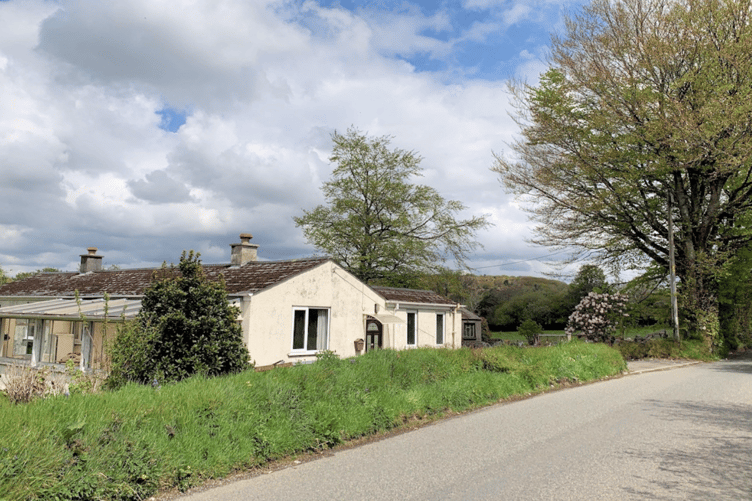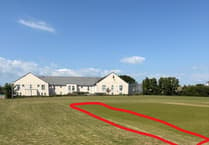EACH week, hundreds of planning applications come before Cornwall Council’s planning department, seeking to win approval for various plans right across the Duchy.
These plans can comprise of a number of different reasonings – ranging from permission to replace windows or listed building consent ranging up to large house building developments or changing of use of a building, for instance, from an office to a café, or flats.
Within this large and often complex system, there are a number of formats from which planning advice and approval can be sought.
These range from full applications where all the details which comprise a proposed development or work to a building are submitted, to outline applications, where further details are yet to be confirmed, for example, an outline application with reserved matters for appearance may not confirm the final proposed development but rather seek permission in principle.
An example of this is one for an outline permission for 20 dwellings on land with reserved matters for appearance and scale; the reserved matters would require further permission later for their inclusion.
Other types of applications include pre-application advice requests, where would-be developers submit often outline proposals to a local authority to ascertain whether it is likely to gain support or not prior to submitting a planning application.
The vast majority of applications are decided by planning officers employed by a local authority under ‘delegated powers’, meaning they do so on behalf of their employer, however, some applications are ‘called in’ by local councillors to be discussed at an area’s strategic planning committee meeting, meaning the final decision rests with a committee of councillors.
Advert consent granted
ADVERTISEMENT consent for the installation of signage outside of a former bank in a conservation zone in Bodmin has been granted approval by Cornwall Council.
The approval comes despite the pleas of Bodmin Town Council to refer the scheme to the Cornwall Council’s own shopfront design guide team to find a compromise between the existing plans and what it might deem acceptable.
Mr Thomas Sturgess applied to the local authority seeking advertising consent for the installation of: “Installation of: one flat cut three mm pearl gold, satin finish aluminium signs on west elevation, two 1240 x 1585 mm pearl gold internal window vinyl prints on west elevation, two 1485 x 1595 mm pearl gold internal window vinyl prints on west elevation, one 300 x 210 mm pearl gold five millimetre acrylic panel displaying opening times, mounted using stand-off locators on west elevation and one 1035 x 1900 mm digitally printed pearl gold graphics, matt UV laminated cover on south elevation.”.
The application concerns 7 Mount Folly in Bodmin, which despite being a historic building in a conservation area, is not listed and was formerly the home of Barclays Bank prior to its closure.
Bodmin Town Council said in its application response: ““The Bodmin Town Council Planning Committee has reviewed the proposed signage for 7 Mount Folly, Bodmin, PL31 2DE, and has the following recommendations for the applicant to consider before the Council can offer its support.
“While the building is not listed, it is located within a conservation area, which requires sensitive consideration of design and detailing. The Committee notes that Historic England previously requested reduced illumination for a similar proposal at the nearby Merlin Cinema.
“The Committee therefore requests that the applicant: Review the scale, materials, and lighting of all proposed signage against Cornwall Council's Shopfront Design Guide, in consultation with its administrators. Seek formal advice from Historic England ‘referring to the Merlin Cinema precedent ‘to confirm appropriate levels of illumination, colour schemes, and signage positioning. Page 2 of 7 Should these points be addressed, the Committee would be pleased to reconsider the application.”
In an accompanying planning officer’s report, Gemma Old, the case officer responsible for approving the plans stated: “The Town Council have not raised any specific objections but have referred the applicants to Historic England. It is not within Historic England's remit to comment on applications, that are not Listed Buildings and meet certain criteria, under the consultation arrangements.”
The plans were approved subject to a number of conditions related to the signage and its maintenance.
Council refuses houses built not according to plans
AN application seeking permission for the demolition of a building and its replacement with three dwellings without compliance with the permission previously granted has been refused by Cornwall Council.
Mr Bolitho made the application concerning the property at Gwel An Fow, Liskeard.
It was noted by the planning officer: “The three dwellings have now been built on site. There appear to be a number of changes from the approved plans to the 'as-built' construction. This Section 73 application seeks to vary the approved plans with the submission setting out the variations built to amend the access junction, which include sections of removed roadside hedge and amendments to the internal hard surfacing. The Planning Statement does not make reference to this within the submission but the submitted plans also show there has been a change to the finished floor levels of the dwellings, so whilst not explicitly referenced within the Statement, given the changes to the finished floor levels are shown on the plans submitted for approval, these changes must also be considered under this application.
“Around 19 metres of Cornish hedge either side of the proposed access point for Plots 1 and 2 have been removed in comparison to the approved plans. In respect of the hard surfaced areas for parking and turning to Plots 1 and 2, there are number of changes to the area and extent of the hard surfacing compared to the approved plans. Notably, a significant incursion of hard surfacing has taken place within the root protection area of the large beech tree.”
Refusing the Section 73 application, Cornwall Council told the applicant: “The loss of a distinctive Cornish hedge road boundary, expanded access opening and changes to the driveway (as proposed under this Section 73 application) would result in a development which fails to appropriately respond to local character and natural beauty of the surrounding Cornwall National Landscape, thereby causing visual harm and a suburbanisation to the surrounding area to an unacceptable degree.
“As such the proposal would fail to take account of the landscape context, whilst also failing to conserve and enhance the landscape and scenic beauty of the Cornwall Page 8 of 9 National Landscape. Additionally, through the potential impacts to the rooting environment of the large beech tree, which contributes positively to the character and appearance of the area, could ultimately result in the demise of the tree, thereby potentially causing further loss and harm to the character of the surrounding area.
“In the absence of any justification for the expansion of the driveway into the root protection area of the beech tree on the southeast boundary, which provides a positive contribution to the surrounding area, the Local Planning Authority cannot conclude that adverse impacts have not, or would not, occur to the tree.”
• Keep up to date with the latest planning applications and other statutory notices (such as alcohol licensing and probates) that affect where you live by visiting our online Public Notice Portal – be the first to know by visiting www.publicnoticeportal.uk/cornish-times-series



.png?width=209&height=140&crop=209:145,smart&quality=75)

Comments
This article has no comments yet. Be the first to leave a comment.